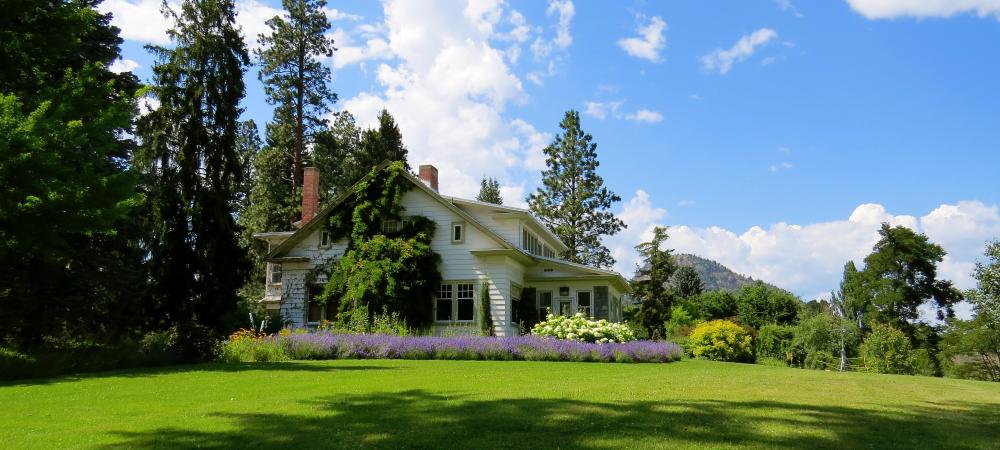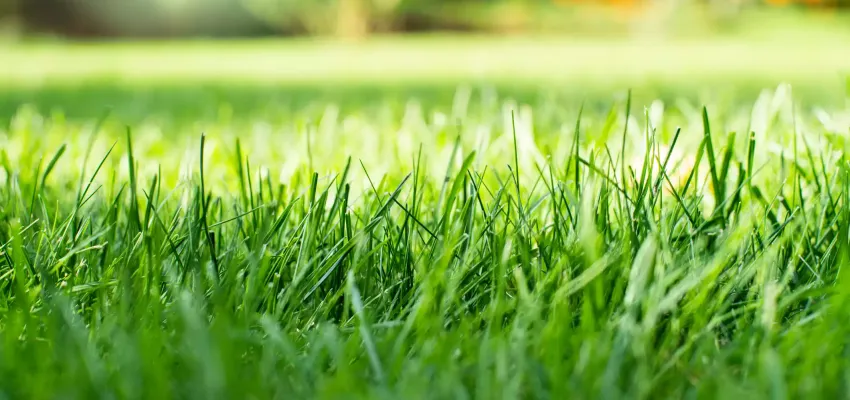Choosing the Best Grass Seed for Your Lawn: A Guide for Tri-County Area Homeowners

Creating a green lawn starts with choosing the right grass seed, and in the Tri-County Area of Northern Pittsburgh, that choice is especially important due to the region’s four distinct seasons. Cold winters, humid summers, and a mix of sun and shade across many properties mean you need grass that’s both resilient and adaptable.
Whether you're establishing a brand-new lawn, repairing patchy areas, or overseeding for thicker turf, understanding your grass seed options is the key to success. This guide breaks down the best grass seed types for the Northern Pittsburgh area and how to choose the right blend for your lawn's conditions.
Why Climate Matters: Understanding the Cool-Season Grass Zone
Northern Pittsburgh falls squarely within the cool-season grass zone. This means the grasses that perform best here thrive in the cooler temperatures of spring and fall, with some resilience to summer heat and winter cold.
Cool-season grasses generally:
- Grow most actively between 60°F and 75°F.
- Go dormant (but not necessarily die) during hot, dry weather.
- Require good spring and fall care for year-round performance.
The Best Grass Seed Types for the Tri-County Area
Kentucky Bluegrass
Known for its beautiful, deep green color and ability to form a dense, lush professional lawn. It spreads through underground stems called rhizomes, which helps it recover from damage and fill in bare spots naturally.
Best Use Scenario: You're a homeowner with a sunny front lawn who values a picture-perfect appearance. You’re willing to invest in regular watering and fertilizing, and you want a self-repairing lawn that can recover from occasional wear, like backyard BBQs or neighborhood foot traffic.
Pro Tip: Mix Kentucky Bluegrass with Perennial Ryegrass to speed up establishment and increase wear tolerance.
Strengths
- Excellent cold hardiness.
- Self-repairing capabilities.
- Classic, aesthetically pleasing lawn appearance.
Challenges
- Slow germination (can take 14–21 days).
- Higher maintenance: needs regular feeding and watering.
- Prone to diseases like leaf spot if overwatered or stressed.
Best Suited For
- Full sun areas.
- Lawns where long-term beauty and resilience are key.
- Blended with other grasses for better establishment speed.
Perennial Ryegrass
Germinates very quickly (5-7 days), providing fast cover and erosion control. It has a fine to medium texture and a dark green color. Perennial ryegrass is a bunch-type grass, meaning it grows in clumps and doesn't spread by rhizomes or stolons.
Best Use Scenario: You need fast results for a patchy lawn that’s thinning after a long winter or pet damage. Your yard gets plenty of sunlight, and you want green coverage within a week — especially useful if you're preparing for a home sale, event, or upcoming season.
Strengths
- Rapid germination makes it perfect for quick repairs.
- Excellent wear tolerance — ideal for foot traffic.
- Good disease resistance with modern cultivars.
Challenges
- Doesn’t spread — no rhizomes or stolons.
- Not as cold-hardy as Kentucky Bluegrass.
- Needs reseeding over time to maintain thickness.
Best Suited For
- Overseeding existing lawns.
- High-traffic zones (play areas, walkways).
- Quick green-up in early spring or fall.
Fine Fescues (Creeping Red, Chewings, Hard, Sheep Fescue)
These are a group of fine-bladed grasses that are known for their excellent shade tolerance and low maintenance requirements. They generally have lower needs for fertilizer and water.
Best Use Scenario: Your backyard is shaded by mature trees, and you prefer a low-maintenance lawn that doesn’t need constant mowing or fertilizing. You're not hosting soccer games or dog zoomies — you just want soft, green groundcover that thrives quietly in the shade.
Strengths
- Excellent shade tolerance — the best of all cool-season grasses.
- Low input needs: less fertilizer, water, and mowing.
- Good drought resistance once established.
Challenges
- Lower wear tolerance.
- Some varieties can build up thatch.
- May have a wispy or less uniform appearance when used alone.
Best Suited For
- Shaded areas under trees or between buildings.
- Low-maintenance or naturalized lawn sections.
- Mixed with Bluegrass or Ryegrass in shaded areas.
Tall Fescue (Turf Type Tall Fescue)
Features a coarser texture than fine fescues or Kentucky bluegrass but has deeper roots, making it very drought tolerant. Modern turf-type tall fescues are refined and offer a good balance of durability and appearance. It is also a bunch-type grass.
Best Use Scenario: You have a larger lawn with a mix of sun and partial shade, and you don’t want to worry about drought or dry summers. You want a tough, durable turf that can handle kids, pets, and occasional laps from the lawnmower without requiring constant attention.
Strengths
- Superior drought and heat tolerance.
- Handles moderate shade well.
- Excellent wear resistance and adapts to many soil types.
Challenges
- Bunch-type growth: doesn’t fill in bare spots unless reseeded.
- Can appear clumpy if seeded unevenly.
- Older varieties may feel rough underfoot.
Best Suited For
- High-use areas with kids, pets, or active outdoor living.
- Yards with inconsistent sun/shade and soil quality.
- Drought-prone areas that need lower water input.
Choosing the Right Grass Seed Blend
For many homeowners in the Tri-County Area of Northern Pittsburgh, the best lawn grass seed is often found in a blend of these cool-season varieties. Blends combine the strengths of different grasses to create a lawn that is more adaptable to varying conditions within your yard, more resistant to pests and diseases, and provides a more consistent appearance.
Look for high-quality grass seed mixes specifically formulated for Pennsylvania or the Northeast. These blends often combine Kentucky Bluegrass for density and color, Perennial Ryegrass for quick establishment and durability, and Fine Fescues for shade tolerance.
The Power of Blends: Why Mixing Grass Types Is Best
In Northern Pittsburgh, blended seed mixes almost always outperform single-type lawns. These pre-mixed blends, often sold as “northeast” or “Pennsylvania” mixes, include:
- Kentucky Bluegrass (for color and density),
- Perennial Ryegrass (for quick germination and traffic tolerance),
- Fine Fescues (for shade and lower maintenance).
Advantages of Blended Grass Seed:
- More resilient to environmental stresses.
- Better disease resistance.
- Improved aesthetic uniformity.
- Ensures success across different parts of the lawn (sun vs. shade).

What to Consider When Choosing A Grass Seed Type
1. Sunlight Exposure
- Full Sun: Kentucky Bluegrass, Perennial Ryegrass.
- Partial Shade: Tall Fescue, Fine Fescues.
- Heavy Shade: Fine Fescues (especially Creeping Red and Chewings Fescue).
2. Soil Type and Drainage
- Sandy soils dry quickly: Choose deeper-rooting varieties like Tall Fescue.
- Clay soils: Blends with Ryegrass and Bluegrass adapt well.
- Poor drainage: Avoid overwatering and use disease-resistant varieties.
3. Foot Traffic
- High Traffic: Perennial Ryegrass, Turf-Type Tall Fescue.
- Low Traffic: Fine Fescues or Kentucky Bluegrass.
4. Lawn Use
- Family Play Area: Durable, fast-recovering grasses (Rye + Fescue).
- Ornamental Lawn: Kentucky Bluegrass for lush looks.
- Pet Zones: Tough, patch-friendly mixes (Perennial Ryegrass + Tall Fescue).
5. Maintenance Preferences
- Low maintenance: Fine Fescue blends.
- Willing to fertilize and water regularly: Kentucky Bluegrass.
- Moderate upkeep: Tall Fescue or mixed seed blends.
Why Professional Guidance Matters for Seed Selection and Seeding
Choosing and successfully planting the best types of grass seed can be more complex than it seems. A professional lawn care service like Custom Lawn Care, Inc. in the Tri-County Area can provide invaluable expertise:
- Accurate Assessment: They can accurately assess your specific soil type, sunlight conditions, and other factors to recommend the absolute best lawn seed or blend for your unique property.
- Expert Knowledge: They understand the nuances of how different grass types perform in the Northern Pittsburgh climate.
- Proper Soil Preparation: Successful seeding requires proper soil preparation, including aeration and thatch removal, which professionals are equipped to handle.
- Correct Application: They ensure the recommended grass seed is applied evenly and at the correct rate for optimal germination and growth.
- Integrated Approach: Professionals can incorporate seeding into a larger lawn care program that includes fertilization, weed control, and pest management for a truly healthy lawn.
Overseeding Your Lawn
Selecting the best grass seed for your Tri-County Area lawn is a critical decision for long-term lawn health and beauty. By understanding the characteristics of the best types of grass seed for this region and considering your yard's specific conditions, you can make an informed choice. For guaranteed results and a lawn that will be the envy of the neighborhood, consider consulting with the lawn care experts at Custom Lawn Care, Inc.. Our team can provide the best lawn grass seed recommendations and professional hydroseeding services tailored to the Northern Pittsburgh climate, ensuring your best yard seed investment pays off with a vibrant, thriving lawn. Contact our team today to learn more!
Do I Need to Do a Soil Test Before Seeding?
While not strictly required, a soil test is highly recommended. It tells you your soil’s pH level and nutrient profile, helping you amend it with lime, compost, or fertilizers before seeding for the best possible germination and growth.
How Do I Know Which Areas of My Lawn Need Shade-Tolerant Grass?
Observe your lawn throughout the day. Areas that receive fewer than 4 hours of direct sunlight daily are considered shaded, and those areas will benefit from Fine Fescue. Dappled sunlight or morning-only sun might do well with Tall Fescue or Bluegrass blends with shade-tolerant varieties.
Should I Use a Grass Seed Blend or a Single Type of Seed?
In most Northern Pittsburgh lawns, a high-quality blend is the best choice. Blends combine the strengths of different grass species — like the beauty of Kentucky Bluegrass, the quick establishment of Ryegrass, and the shade tolerance of Fine Fescues — making your lawn more adaptable, resilient, and visually consistent across sun and shade.
When is the Best Time to Seed a Lawn in Northern Pittsburgh?
The ideal time to seed cool-season grasses in this region is late summer to early fall (late August to mid-October). Soil is still warm enough to encourage quick germination, and there's typically more consistent rainfall and fewer competing weeds. Spring (April to early May) is also acceptable, but newly germinated grass may struggle with summer heat and drought unless properly irrigated.
